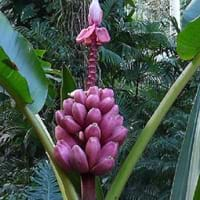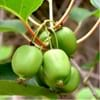Life Span
Perennial
Perennial
Type
Fruit
Flowering Plants, Fruits, Herbs
Origin
Eastern Asia
Central America, West Indies
Types
Actinidia arguta, Actinidia giraldii, Actinidia hypoleuca
Not Available
Number of Varieties
Not Available
Habitat
Dappled Shade, open Woodlands
Open areas, Open Plains
USDA Hardiness Zone
3-8
8-11
AHS Heat Zone
8-1
Not Available
Sunset Zone
1a, 1b, 2a, 2b, 3a, 3b, 4, 5, 6, 7, 8, 9, 14, 15, 16, 17, 18, 19, 20
Not Available
Habit
Vining/Climbing
Upright/Erect
Flower Color
White, Ivory
Red, Reddish Plum, Rose
Flower Color Modifier
Bicolor
Bicolor
Fruit Color
Green, Yellow green
Red, Rose, Tan
Leaf Color in Spring
Green, Dark Green
Sea Green, Gray Green
Leaf Color in Summer
Dark Green
Sea Green, Gray Green
Leaf Color in Fall
Dark Green
Sea Green, Gray Green
Leaf Color in Winter
Light Green
Sea Green, Gray Green
Leaf Shape
Oval
Cone shaped
Plant Season
Spring, Summer, Fall
Fall, Spring, Summer
Sunlight
Full Sun, Partial Sun
Full Sun, Partial shade
Type of Soil
Loam
Clay, Loamy
The pH of Soil
Neutral
Neutral, Slightly Acidic
Soil Drainage
Well drained
Well drained
Bloom Time
Spring, Late Spring, Early Summer
Early Fall, Early Summer, Late Spring, Late Summer, Summer
Tolerances
Shade areas
Not Available
Where to Plant?
Ground, Pot
Ground
How to Plant?
Grafting, Stem Cutting
From bulbs, From Rhizomes, Seedlings
Plant Maintenance
Low
Medium
Watering Requirements
Average Water Needs, Requires regular watering
Allow soil to be completely dry in between waterings, It cannot sustain wet-feet, Requires regular watering, Water every two or three days during warmer months
In Summer
Regular watering required
Lots of watering
In Spring
Moderate
Moderate
In Winter
Average Water
Average Water
Soil pH
Neutral
Neutral, Slightly Acidic
Soil Type
Loam
Clay, Loamy
Soil Drainage Capacity
Well drained
Well drained
Sun Exposure
Full Sun, Partial Sun
Full Sun, Partial shade
Pruning
Remove damaged leaves, Remove dead branches, Remove dead leaves
Prune after harvesting, Remove dead or diseased plant parts
Fertilizers
Apply 10-10-10 amount, fertilize twice a year
All-Purpose Liquid Fertilizer
Pests and Diseases
Botrytis head rot, Japanese Beetles, Leaf Rollers, Nematodes, Phytophthora, Root rot, Sclerotinia blight, Spider mites, Thripes
Anthracnose, Banana aphid, Banana mosaic, Black sigatoka, Bunchy top, Cigar end rot, Coconut scale, Moko disease, Panama disease, Rhizome rot, Yellow sigatoka
Plant Tolerance
Shade areas
Drought
Flower Petal Number
Single
Single
Foliage Texture
Medium
Bold
Foliage Sheen
Glossy
Glossy
Attracts
Cats
Not Available
Allergy
Not Available
Hives, Itchiness, Swelling, Throat itching, wheezing
Aesthetic Uses
Cottage Garden
Not Used For Aesthetic Purpose
Beauty Benefits
Not Available
Not Available
Environmental Uses
Shadow Tree
Air purification
Medicinal Uses
Antioxidants, Fiber, Folate, Rich in Potassium, Vitamin C
Fiber, Hair Loss, Kidney Stones, Piles, Vitamin C
Part of Plant Used
Fruits
Fruits, Leaves
Other Uses
Grown for shade
Used as Ornamental plant, Used for its medicinal properties, Used in herbal medicines
Used As Indoor Plant
No
No
Used As Outdoor Plant
Yes
Yes
Garden Design
Edible, Feature Plant, Vine
Cutflower, Feature Plant, Foundation, Mixed Border, Screening / Wind Break, Tropical
Botanical Name
ACTINIDIA arguta
Musa acuminata
Common Name
Hardy Kiwi
Red banana, Red Dacca bananas
In Hindi
हार्डी कीवी
लाल केला
In German
Hardy Kiwi
Red Banana
In French
kiwai
Red Banana
In Spanish
kiwi hardy
Red Banana
In Greek
σκληραγωγημένα ακτινίδια
κόκκινο Μπανάνα
In Portuguese
kiwi Hardy
Banana vermelha
In Polish
hardy kiwi
Red Banana
In Latin
Hardy kiwi
ARIERA Rubrum
Phylum
Magnoliophyta
Magnoliophyta
Class
Magnoliopsida
Liliopsida
Order
Theales
Zingiberales
Family
Actinidiaceae
Strelitziaceae
Clade
Angiosperms, Asterids, Eudicots
Monocotyledonous
Tribe
Not Available
Not Available
Subfamily
Actinidiaceae
Not Available
Number of Species
Not Available
Not Available
Importance of Hardy Kiwi and Red Banana
Want to have the most appropriate plant for your garden? You might want to know the importance of Hardy Kiwi and Red Banana. Basically, these two plants vary in many aspects. Compare Hardy Kiwi and Red Banana as they differ in many characteristics such as their life, care, benefits, facts, etc. Every gardener must at least have the slightest clue about the plants he wants to plant in his garden. Compare their benefits, which differ in many ways like facts and uses. The medicinal use of Hardy Kiwi is Antioxidants, Fiber, Folate, Rich in Potassium and Vitamin C whereas of Red Banana is Fiber, Hair Loss, Kidney Stones, Piles and Vitamin C. Hardy Kiwi has beauty benefits as follows: Not Available while Red Banana has beauty benefits as follows: Not Available.
Compare Facts of Hardy Kiwi vs Red Banana
How to choose the best garden plant for your garden depending upon its facts? Here garden plant comparison will help you to solve this query. Compare the facts of Hardy Kiwi vs Red Banana and know which one to choose. As garden plants have benefits and other uses, allergy is also a major drawback of plants for some people. Allergic reactions of Hardy Kiwi are Not Available whereas of Red Banana have Hives, Itchiness, Swelling, Throat itching and wheezing respectively. Having a fruit bearing plant in your garden can be a plus point of your garden. Hardy Kiwi has no showy fruits and Red Banana has showy fruits. Also Hardy Kiwi is not flowering and Red Banana is flowering. You can compare Hardy Kiwi and Red Banana facts and facts of other plants too.





